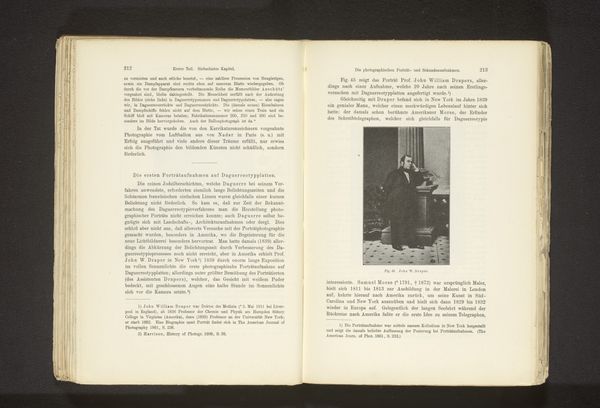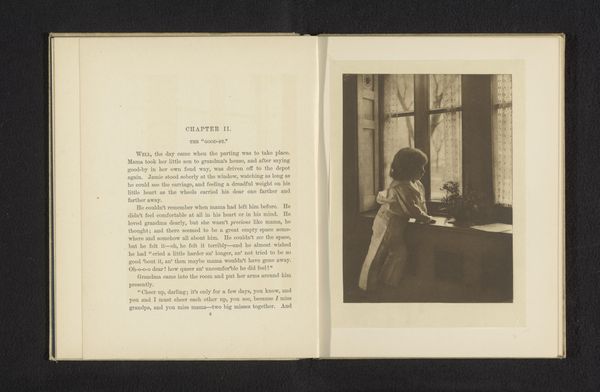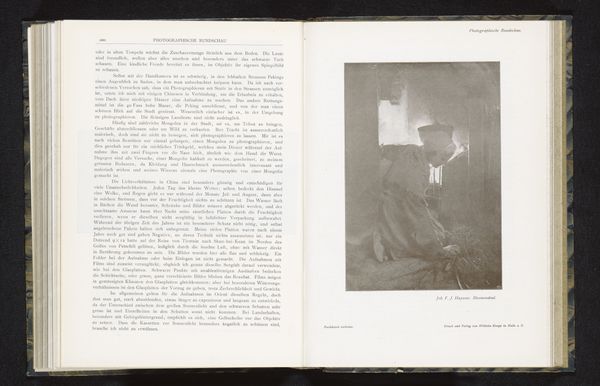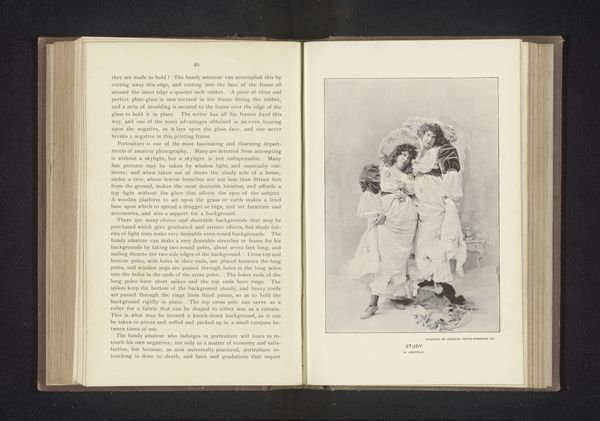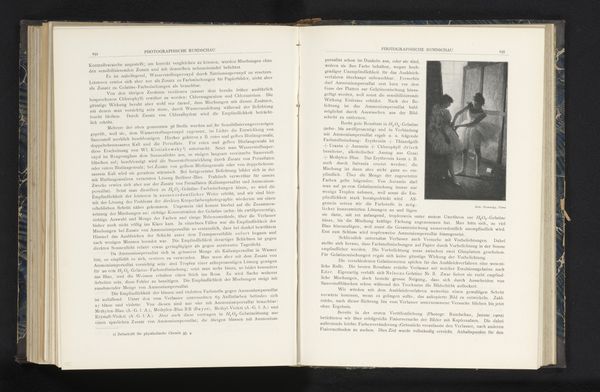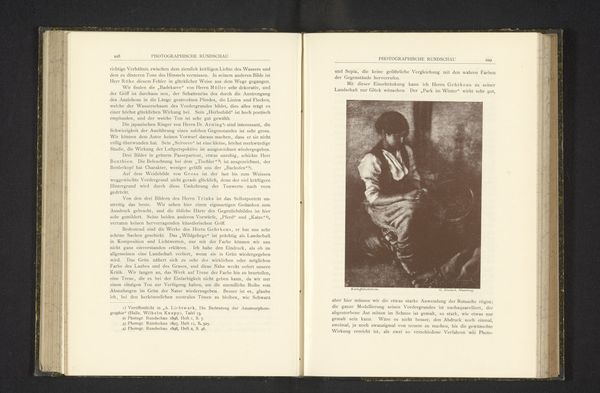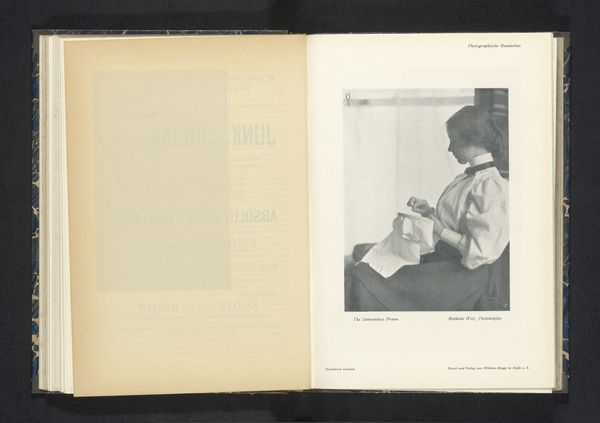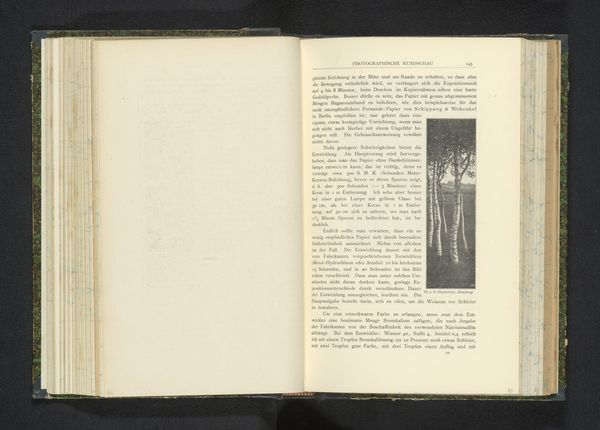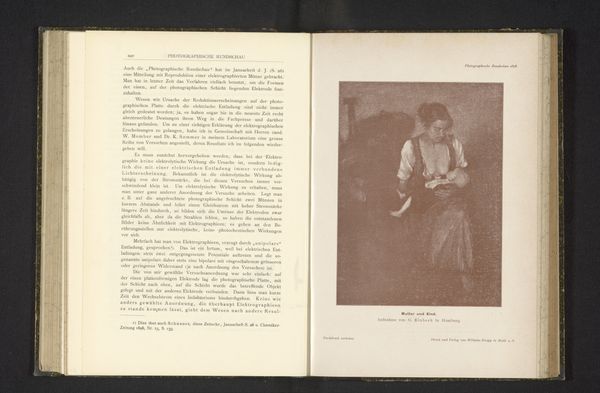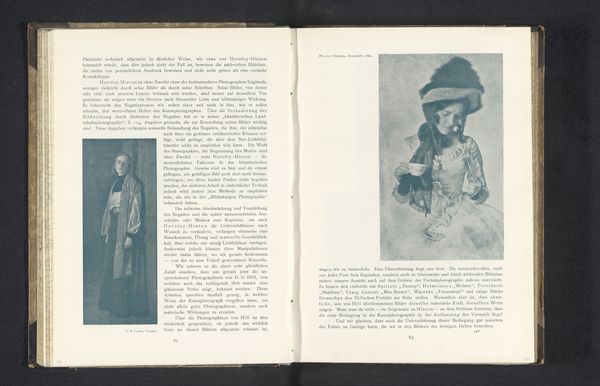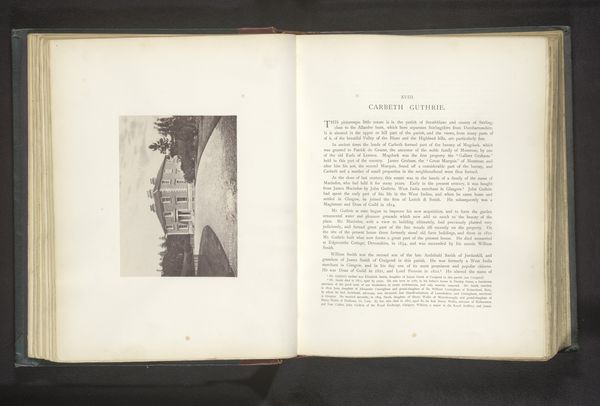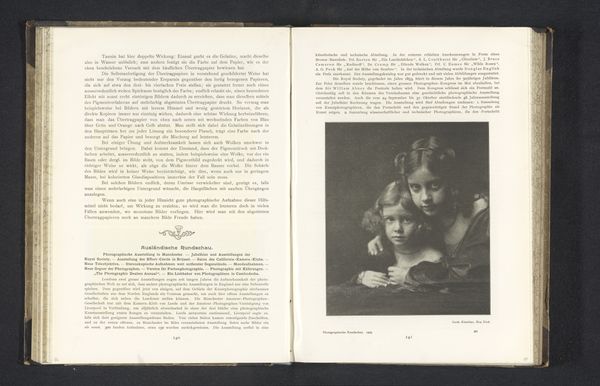
Dimensions: height 201 mm, width 120 mm
Copyright: Rijks Museum: Open Domain
Editor: This is Frank Eugene's "Gezicht op een moeder die haar dochter toespreekt," made before 1902. It’s a photographic print, likely published in some kind of periodical. The relationship feels very formal and distant—how do you interpret this work? Curator: It's striking, isn't it? The distance you observe speaks volumes about early 20th-century social expectations, especially regarding the portrayal of women and children. Eugene, a key figure in Pictorialism, often explored these constructed relationships. Consider the mother's attire: draped, almost ghostly. What power dynamics do you see at play between the figures? Editor: I see that the mother's taller and shrouded, so it does convey a power imbalance through the pictorial composition. But in what ways was Pictorialism engaging with societal issues? Curator: Pictorialism, while aesthetically driven, wasn't devoid of social commentary. Think about its emphasis on staged scenes and its rejection of purely documentary photography. This challenges the supposed objectivity of photography, revealing the artist's hand and therefore their perspective. Could the careful staging of this photograph be interpreted as a comment on the roles women were expected to play? Editor: That’s a perspective I hadn't considered. The mother, almost like a statue, reinforces those prescribed roles. Curator: Precisely. And what about the child's direct gaze? Is it defiance, or forced compliance? Thinking about gender studies and childhood studies informs the reading of this work, offering insights into representation and social conditioning. Editor: That helps me understand Pictorialism in a completely new way. I went from thinking it was just pretty photography to seeing its connection to social narratives around gender and representation. Curator: Exactly! It reveals the depth of historical and cultural meaning embedded within seemingly simple photographs. These historical photographs provide insightful views to societal gender construction.
Comments
No comments
Be the first to comment and join the conversation on the ultimate creative platform.
